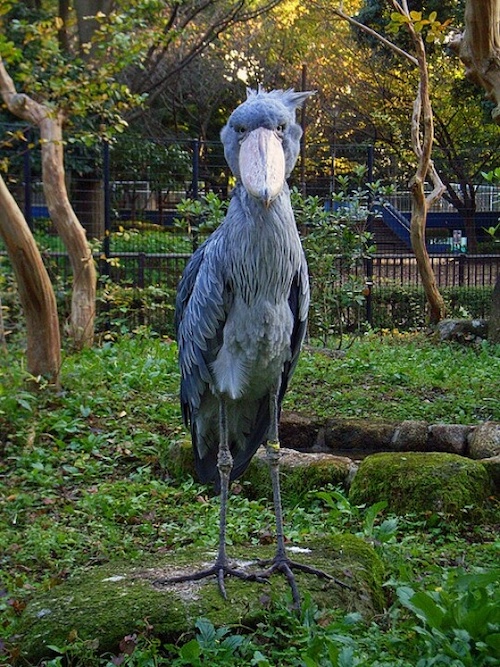
(quote)
At 74, Wisdom the albatross is welcoming new motherhood once again
The Laysan albatross was first banded (or marked) in Hawaii in 1956. Meaning, she could be even older than the current estimate of 74. She’s been at motherhood for quite some time; Wisdom has likely produced 50 to 60 eggs, and brought as many as 30 chicks to the fledgling state, NPR’s Bill Chappell reported. But it still feels like a marvel to watch her keep at it; after laying her latest egg in December, she was captured returning to her nest last week on Midway Atoll National Wildlife Refuge to tend to her young chick.
See the Adorable Video of Wisdom, the World’s Oldest Wild Bird, Tending to Her New Chick at Age 74
First banded in 1956, the Laysan albatross has become a mother once again at Midway Atoll National Wildlife Refuge
Once a mother, always a mother: Wisdom, the oldest known wild bird, is settling into parenthood again at age 74. The world-famous Laysan albatross (Phoebastria immutabilis) was spotted caring for her newest chick at Midway Atoll National Wildlife Refuge in the North Pacific Ocean this month. Dan Rapp, a volunteer with the United States Fish and Wildlife Service, captured video footage of the sweet interaction, in which Wisdom gently preened her chick’s downy feathers.
When the egg hatched, Wisdom’s mate was caring for it. She, meanwhile, was at sea restoring her energy. On February 6, the experienced mother returned to take over parenting duties from her mate—and meet the chick for the first time.
The late American biologist Chandler Robbins first banded Wisdom in 1956, while Dwight D. Eisenhower was president. At that time, Wisdom had already laid an egg—and Laysan albatrosses typically do not reach sexual maturity until they are at least five years old. That means Wisdom is at least 74 years old, but she could be even older.
“Of the more than 250,000 birds banded since … 1956, the next oldest bird we know about currently is just 52 years old,” Jon Plissner, a wildlife biologist with the U.S. Fish and Wildlife Service, told NPR’s Bill Chappell in December. Biologists estimate Wisdom has laid between 50 and 60 eggs throughout her lifetime. And at least 30 of those produced hatchlings that made it to the fledgling stage, when they have left the nest and are starting to learn to fly. Most recently, she hatched a chick in 2021.
Albatrosses: Inspiring Legends & Myths
Albatrosses have long been a symbol of mystery and fortune in literature and culture. Ancient tales suggest that their presence brings luck to seafarers. While some legends and myths have faded from memory today, the reverence for these ocean wanderers still lives on. To celebrate World Albatross Day, we share some of the tales behind these incredible species.
Good Fortune
Many once believed that albatrosses embodied the souls of lost sailors and possess magical qualities that can be harnessed to aid in healing. To harm an albatross was a harbinger of the sea’s wrath. In Samuel Taylor Coleridge’s The Rime of the Ancient Mariner (1798), the protagonist uses his crossbow to kill an albatross, causing fear that the incident will bring misfortune to the crew. As the story progresses, their misgivings are confirmed, and his fellow sailors force him to wear the bird remains around his neck as a form of penance. The deceased albatross then served for centuries as an expression of regret for past mistakes and sins.
Albatrosses are excellent navigators, using ocean winds to navigate the High Seas. As such, by observing albatrosses, some sailors were able to adjust their course to avoid hazardous conditions. The lack of a large ocean wanderer was, in fact, a negative omen; the mere sight of it was enough to persuade superstitious seafarers that their journey would be successful.
Power
Carl Linnaeus, who, in the 18th century, invented the system of Latin names by which different species are known, called the group Diomedea, a reference to the Greek legend in which the companions of the warrior Diomedes are transformed into birds. Linnaeus was likely motivated by accounts circulating in Europe at the time, which narrated the remarkable sight of these colossal birds, some of which possess wingspans of more than 3-metres long, gliding alongside ships that were struggling to navigate the turbulent waters of the Southern Ocean.
Albatrosses are often referred to as the ‘Prince of the Wave’, not only due to their impressive size but also their capabilities, given they possess strong wings that enable them to remain aloft for extraordinarily long periods without the need to land. These birds are experts in flying, capable of soaring over extensive areas of the sea without flapping their wings. As adults, they spend years travelling thousands of miles around the globe. They’re always on the move, and some species fly around the Antarctic two or three times before making their way to their breeding grounds on remote islands in the Southern and Indian Oceans.
Everlasting Love
Albatrosses do not typically congregate on land; when they do, they are usually found on isolated islands where they form large colonies. They mate for life and are frequently referred to as having the most minimal ‘divorce rate’ among all birds. Adults are renowned for their intricate courtship dance displays – for instance, Wandering Albatross pairs have a minimum of 22 distinct dance moves, that includes head rolling, wing spreading, and beak-clacking. The impressive display of Laysan Albatross involves 24 different movements that includes everything from whinnying and head flicking to air snapping and clucking. These mating rituals, which continue to evolve over time, have ultimately become one-of-a-kind. The couple that eventually mates will then lay a single egg.
Albatross pairs have a restricted time together, briefly congregating solely at their breeding sites until their egg is produced. Subsequently, they alternate between incubating the egg and hunting for sustenance. Eventually, both birds must scour the ocean for food to nourish their developing offspring, and once this becomes independent, the pair goes their separate ways for the rest of the year, reconnecting solely to breed again.
(unquote)
Image courtesy Jon Brack/Friends of Midway Atoll National Wildlife Refuge





